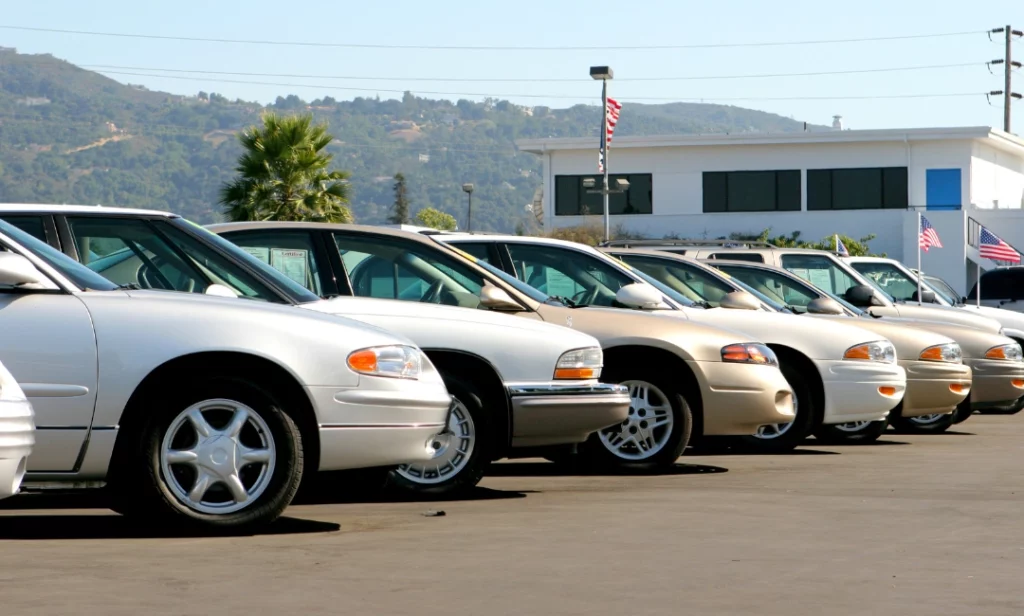An automobile manufacturer sold 30000 new cars, is the latest trending search query, showcasing how significant a milestone a car company has achieved. While it has been treated as breaking news, the truth is quite different.
In reality, an automobile manufacturer sold 30000 new cars one to each of 30,000 customers, in a certain year is nothing more than a math problem. It simply asks how many of the 30,000 new cars likely had power door lock problems within the first 5,000 miles. The answer is about 390 cars out of 30,000.
It is often used in U.S. schools’ statistics classes to provide knowledge via real-world analogies. Despite this, it is catching attention in the automotive world. The reason is simple: it mirrors the real challenges automakers face daily. From figuring out customer satisfaction, tracking product reliability, measuring success in a competitive market, and more.
In this blog, we will break down the original question, solve it step by step, and then connect it to why the idea of selling 30,000 cars in a year is such a big deal for real automakers.
Let’s dive in.
Here’s the Question That Sparked the 30,000 Cars Discussion
An automobile manufacturer sold 30000 new cars is not a complete entity on its own. It is a part of a much bigger and extensive mathematical problem that takes inspiration from the real world. Here’s the full question that started it all:
An automobile manufacturer sold 30,000 new cars, one to each of 30,000 customers, in a certain year. The manufacturer was interested in investigating the proportion of the new cars that experienced a mechanical problem within the first 5,000 miles driven.
- A list of the names and addresses of all customers who bought the new cars is available. Describe a sampling plan that could be used to obtain a simple random sample of 1,000 customers from the list. Each customer from a simple random sample of 1,000 customers who bought one of the new cars was asked whether they experienced any mechanical problems within the first 5,000 miles driven. Forty customers from the sample reported a problem. Of the 40 customers who reported a problem, 13 customers, or 32.5%, reported a problem specifically with the power door locks.
- Explain why 0.325 should not be used to estimate the population proportion of the 30,000 new cars sold that experienced a problem with the power door locks within the first 5,000 miles driven.
- Based on the results of the sample, give a point estimate of the number of new cars sold that experienced a problem with the power door locks within the first 5,000 miles driven.
At first glance, this question looks like a school exercise. However, if you swap the power door locks with, say, battery failures or engine issues, you will see how close this is to what real-world automakers actually deal with in quality control.
Solving The “An Automobile Manufacturer Sold 30000 New Cars” Problem Step By Step
The problem of an automobile manufacturer that sold 30000 new cars is a three-part problem that isn’t as tricky as it sounds. The question asks us to figure out how many of the 30,000 new cars likely had power door lock problems within the first 5,000 miles.
To do that, we will walk through the solution one part at a time. First, we will create a fair sampling plan, then explain why 0.325 is misleading, and finally calculate a reliable point estimate.
What Is The Correct Sampling Plan?
The best way to select 1,000 customers is with a simple random sample. Just assign every customer a number from 1 to 30,000, then use a random number generator to select 1,000 unique numbers. The customers who match those numbers form the survey group.
This way ensures every car buyer has an equal chance of being included. It is exactly the method recommended by the American Statistical Association (AP Stats) for unbiased results.
Suggestion: See How SEALs and Submarine Crews Train Together.
Why 0.325 Is Misleading?
The 0.325 figure (32.5%) is misleading because it represents the fraction of customers who already reported a problem and then said it was with power locks. But the survey showed that 960 of 1,000 customers had no problems at all.
It means if you use 0.325 as the overall estimate, you would wrongly suggest nearly a third of all 30,000 cars had lock problems. That would be a huge overestimate and could unfairly damage the manufacturer’s reputation.
The Point Estimate: 390 Cars
The right approach here is to calculate the sample proportion of all surveyed customers. We know that from the sample of 1,000 customers, 13 reported a power door lock problem. Thus, the sample proportion is: p^= 13/1000 =0.013
Now, we will apply this sample proportion to the population of 30,000: 0.013 × 30000 = 390
Thus, the best estimate is that about 390 cars out of 30,000 sold cars had power lock problems in the first 5,000 miles. It also means that 29,610 cars had no issues in those first few miles.
Why This Query Is Getting Traction in the Real World?
This math problem is showing up in the auto industry circle because it is more than just a classroom puzzle. It actually reflects how real car companies measure performance and reliability.
- Automakers heavily rely on surveys and samples instead of contacting every single buyer.
- Quality control depends on accurate proportions, not misleading conditional percentages.
- Business decisions hinge on these estimates, from deciding whether to issue a recall to forecasting future sales. The recent recalls from automakers like Toyota, Ford, Kia, and others are prominent examples.
The Real Significance of Selling 30,000 New Cars in a Year

Selling 30,000 new cars in a year is a huge accomplishment, especially in today’s highly competitive automotive market. The U.S. car market is home to hundreds of automakers selling thousands of cars. Thus, selling around 30k new models is impressive, mainly for an up-and-coming brand.
- According to Statista, many mid‑sized automakers in the U.S. average between 25,000 and 40,000 annual unit sales.
- Reaching the 30,000 mark puts a brand in the same conversation as respected niche automakers like Subaru in its early U.S. years.
- In an industry dominated by giants like Toyota, Ford, and GM, hitting 30,000 sales signals strong customer demand and brand credibility.
So, while the number in the math problem is hypothetical and just to teach students via real-world analogies, it is absolutely realistic and impressive in the real world.
Related: Explore Rare and Famous Car Brands That Begin With the Letter P.
What Real-World Automakers Can Do to Achieve Such a Milestone?
Reaching 30,000 car sales in a year isn’t luck. It is the result of smart planning, customer focus, and data‑driven decisions. When an automobile manufacturer sold 30000 new cars, it highlighted strategies that any real automaker could use to reach such a milestone.
Success in the modern auto industry depends not only on building good vehicles but also on understanding customers, tracking performance, and responding quickly when issues arise.
Here are some of the most effective steps automakers can take to achieve (and even surpass) that goal:
- Use random sampling surveys to monitor product reliability early. This will help them identify potential problems before they spread.
- Invest in quality control and fixing problems before they become widespread. Strong QC processes save money and protect a brand’s reputation.
- Build customer trust with transparent reporting and responsive service. Today’s buyers value honesty and quick solutions more than ever.
- Leverage data analysis to understand which features customers value most. Data helps automakers design cars that match real demand.
- Benchmark against competitors using industry reports like the J.D. Power Vehicle Dependability Study. This will keep companies aware of where they stand in the market.
These practices not only help a car brand hit the 30,000‑sales milestone and surpass it, but they also help create loyal customers who return year after year.
Frequently Asked Questions
Is an automobile manufacturer sold 30000 new cars a real news story?
No, it is not. The phrase comes from a statistics problem generally used in U.S. classrooms, especially AP Statistics. However, it is quite popular in search because it shows the real issues automakers encounter, like estimating customer problems, measuring reliability, and celebrating major sales milestones.
Why is the number 30,000 used in this statistics question?
The number 30,000 is used because it is large enough to feel realistic in the automotive world but simple enough for easy calculations. Many mid‑sized automakers in America sell between 25,000 and 40,000 new cars annually, so this figure is both educational and practical.
What does the 0.325 in the problem represent, and why is it misleading?
The 0.325 represents the proportion of surveyed customers who already had a mechanical problem and reported it was with the power door locks. It is misleading because it ignores the majority of the customers who had no problems. So, using it would overestimate the actual proportion of all cars with lock issues.
Conclusion
Thus, you can see that an automobile manufacturer sold 30000 new cars one to each of 30,000 customers, in a certain year, is not just a question about sales numbers. It has become a case study in how statistics helps businesses thrive. From choosing the right sampling plan, to avoiding misleading percentages like 0.325, to making a clear point estimate of 390 cars with issues, this scenario blends classroom math with real-world business strategy.
For students, it is a lesson in statistics. For automakers, it is a reminder that data-driven decisions build trust, improve products, and drive growth in one of the world’s most competitive industries.

